Calculus
1/45
There's no tags or description
Looks like no tags are added yet.
Name | Mastery | Learn | Test | Matching | Spaced |
|---|
No study sessions yet.
46 Terms
Simple Compound interest formula
A(t) = P(1+r/n) ^nt
radians to degrees
x 180/π
degrees to radians
x π/180
Tangent Line Definition
instantaneous slope of a line at ONE point
secant line definition
the slope between 2 points
pythagorean identity
cos^2x + sin^2x = 1
calculating the slope of a secant line
f(b) - f(a)/b-a OR limit definition
Limit definition
f(x+h)-f(x)/h
1/sin(x)
csc(x)
1/cos(x)
sec(x)
1/tan(x)
cot(x)
d/dx (√x)
1/2√x
power rule
d/dx (x^n) = n x^n-1
chain rule
d/dx f(g(x)) = f'(g(x)) g'(x)
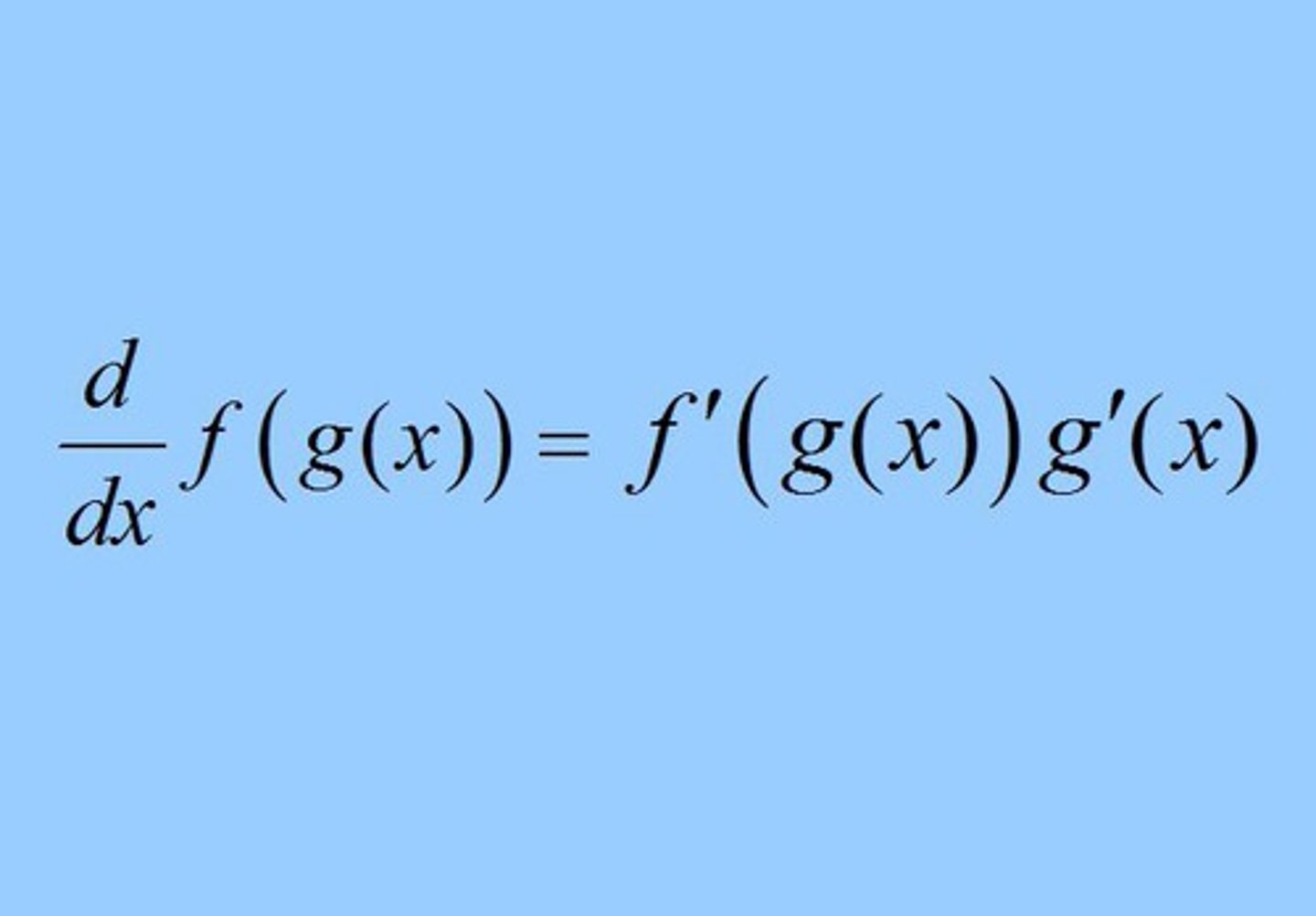
general power rule
d/dx [g(x)]^r = r [g(x)]^r-1 times g'(x)
![<p>d/dx [g(x)]^r = r [g(x)]^r-1 times g'(x)</p>](https://knowt-user-attachments.s3.amazonaws.com/6e3068d4-fa13-43cd-bca7-b5b443c45fdb.jpg)
d/dx sec(x)
sec(x)tan(x)
product rule
d/dx u(v) = uv' +vu'

quotient rule
u/v = (u'v - v'u) / v²

lim (x->0) sinx/x
1
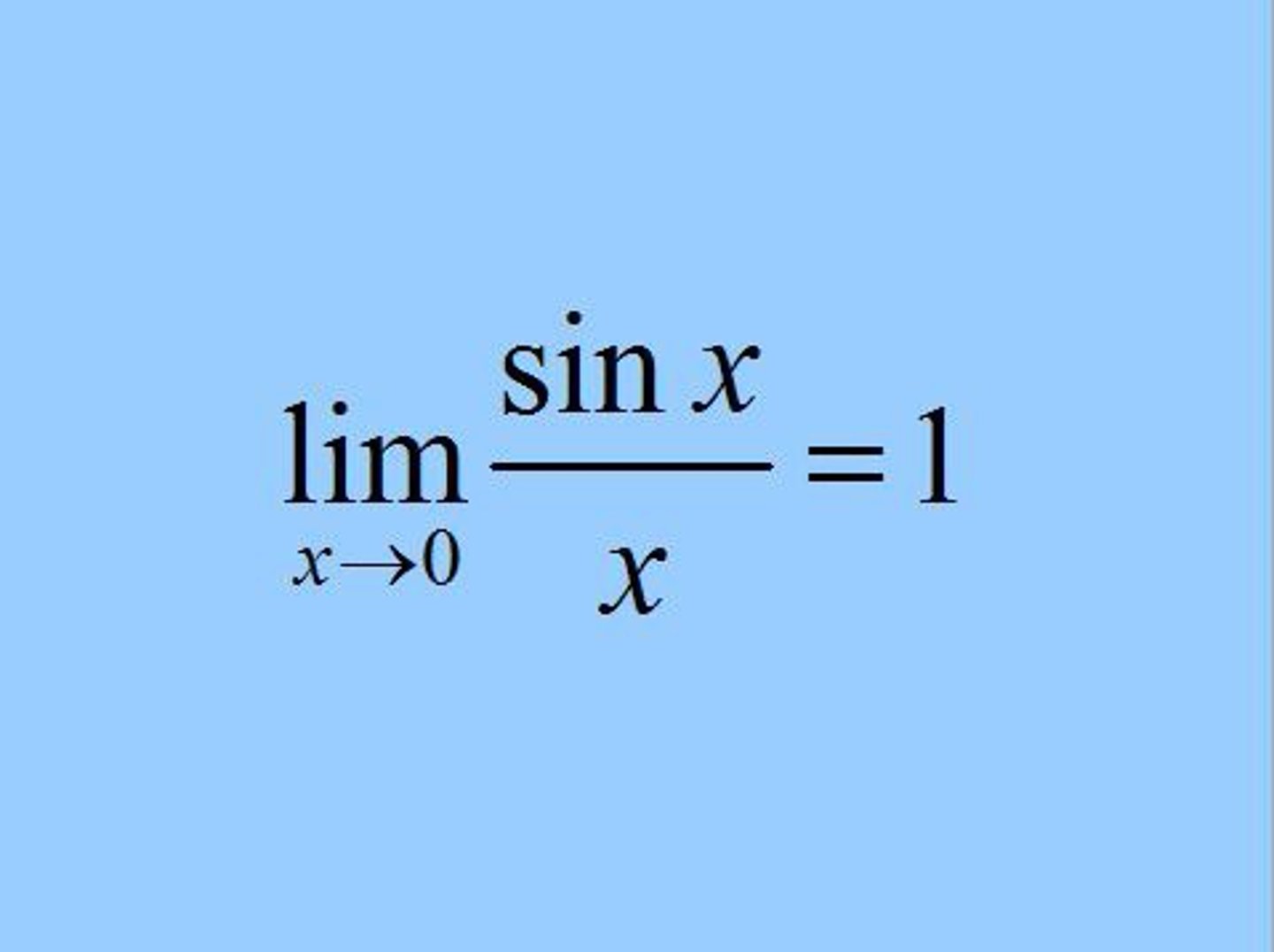
lim (x->0) (1-cosx)/x
0

d/dx cos(x)
- sin(x)
d/dx sin(x)
cos(x)
d/dx e^x
e^x
d/dx (e)^f(x)
f'(x)e^f(x)
lne
1
d/dx lnx
1/x
d/dx ln f(x)
f'(x)/f(x)
d/dx lny
y'/y
are endpoints differentiable?
NO
e^0
1
d/dx (e^-x)
-e^-x
what should you do when finding extrema on a closed interval?
check endpoints!
d/dx (sin^-1x)
1/√(1-x²)
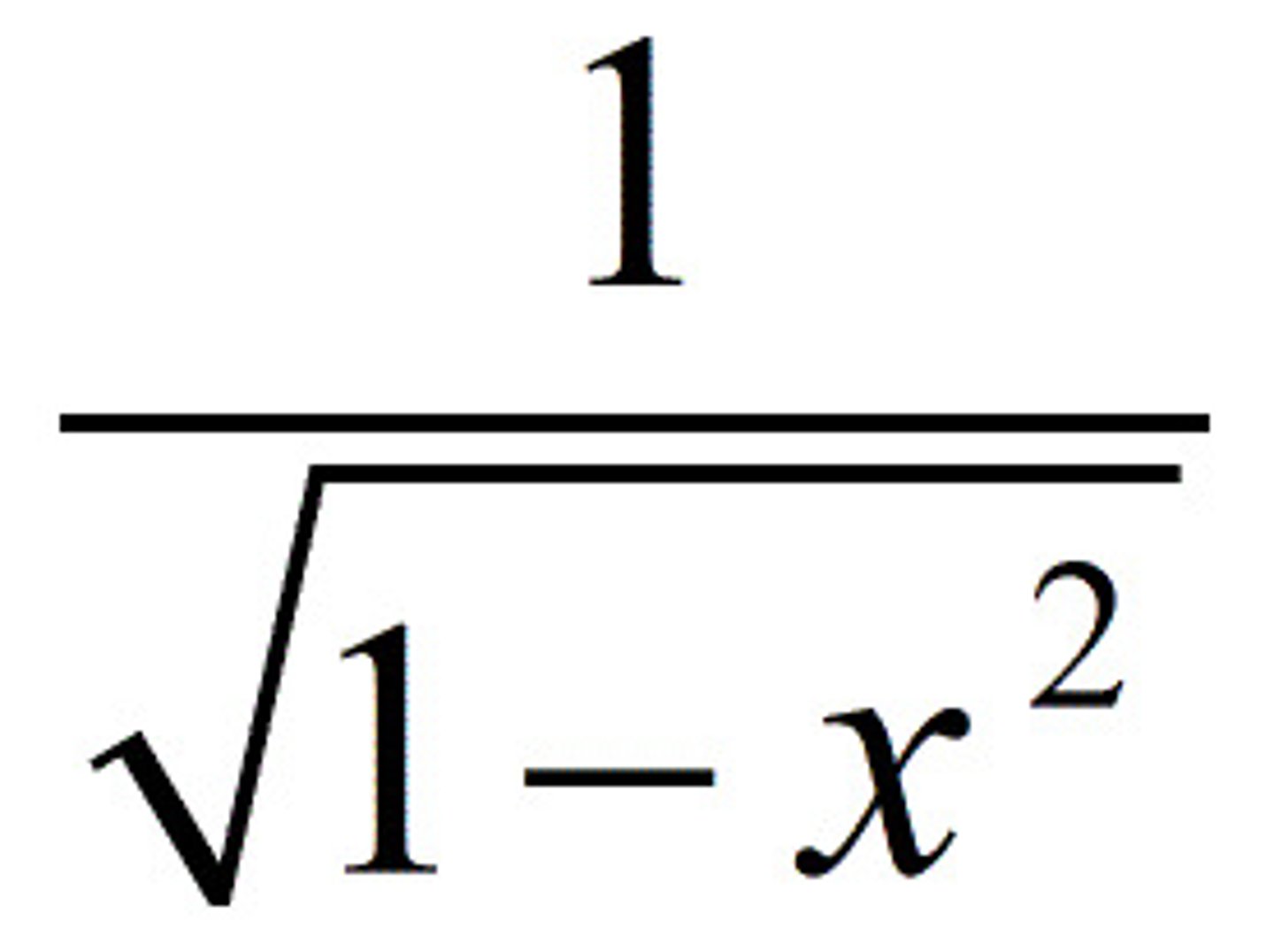
d/dx (cos^-1x)
-1/√(1-x²)
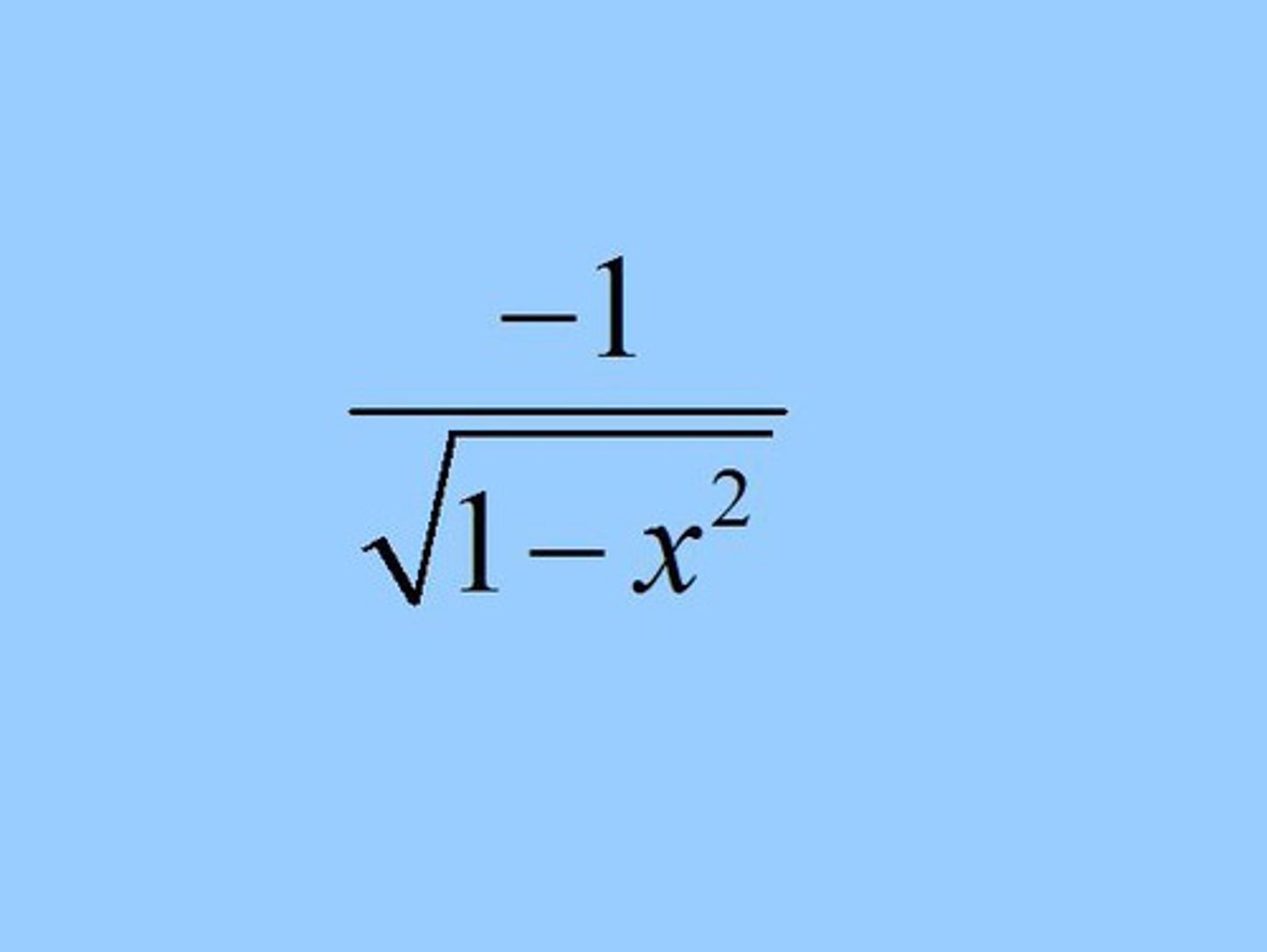
d/dx (tan^-1x)
1/(1+x²)
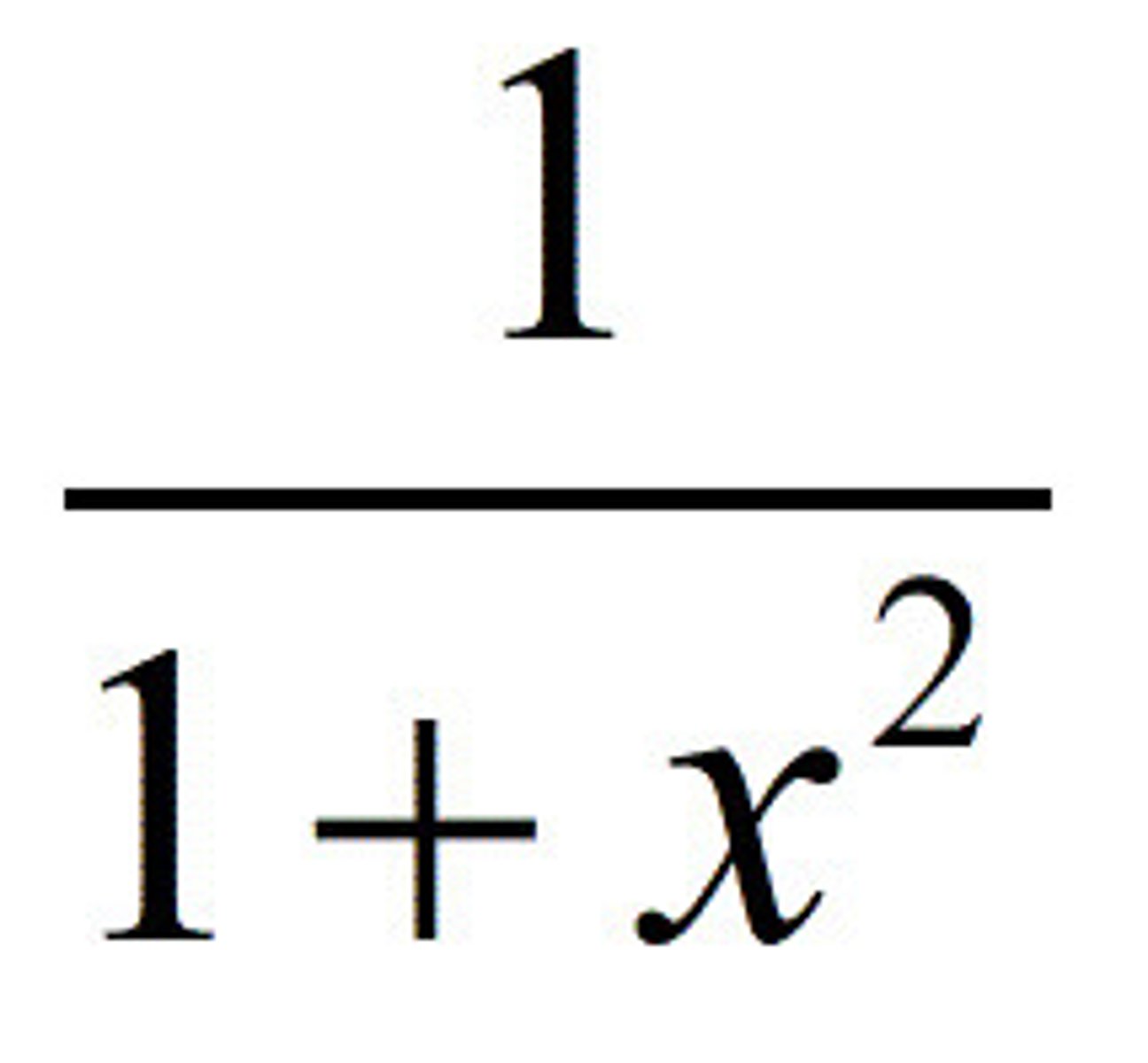
Area of a circle
πr²
Circumference of a circle
2πr
Volume of a sphere
4/3πr³
Surface area of a sphere
4πr²
volume of a cylinder
V=πr²h
Surface area of a cylinder
2πr² + 2πrh
d/dx tan(x)
sec²x
antiderivative of sec²x
tan(x) + c
antiderivative of lnx/x
lnx²/2
ln(1)
= 0
antiderivative of du / (u²+1)
tan^-1 (u)